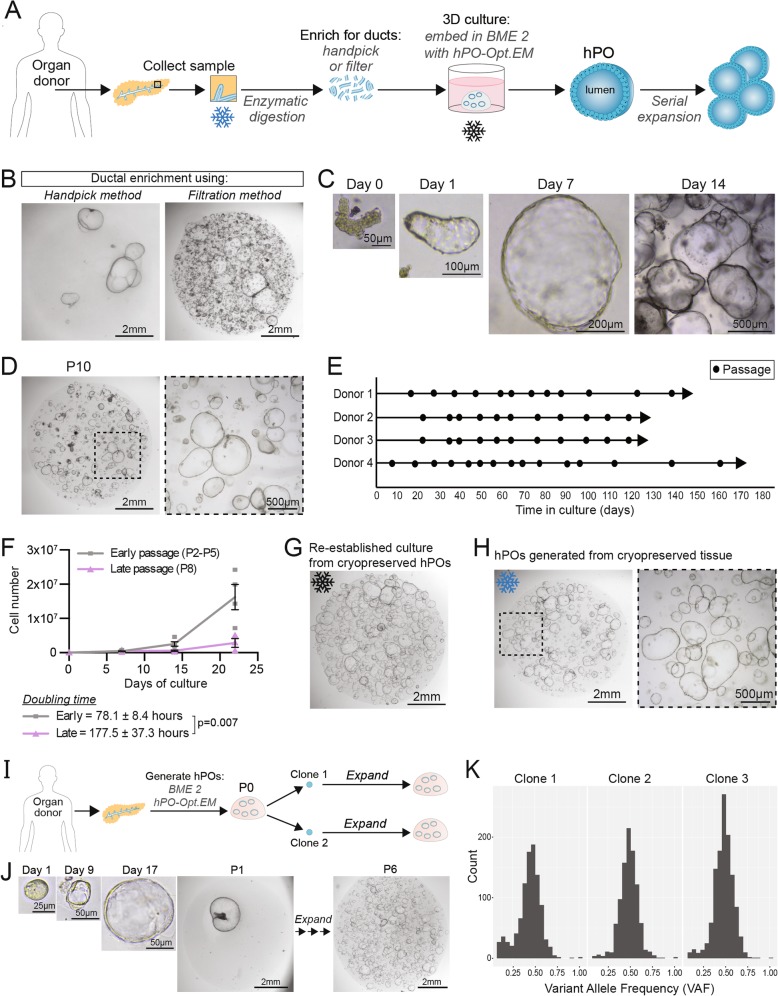Fig. 1.
Human pancreatic organoids (hPOs) expand long-term, even from cryopreserved tissue and are amenable for clonal expansion. a Schematic of hPO generation and expansion. Pancreatic tissue undergoes enzymatic digestion to release ductal fragments, which are subsequently enriched either by handpicking or filtration. Pancreas ductal fragments are then embedded in BME 2 as extracellular matrix and overlayed with the hPO-Opt.EM medium (see methods; hPO-Opt.EM composition). Generated hPOs can be serially expanded by mechanical dissociation. Cryopreservation can be performed on the primary tissue for derivation at a later time (blue asterisk) or on the established hPOs (black asterisk). b Comparison of P0 cultures following ductal enrichment by handpicking (left) or filtration (right) (n = 5). c Brightfield images of ductal fragments isolated from fresh human pancreatic donor tissue grown and expanded as hPOs. d hPOs can be expanded and cultured long-term in vitro. Representative images of hPO culture at passage 10 (P10). e hPOs can be passaged over many months in hPO-Opt.EM. (n = 4 independent donors; circle = passage). f hPO growth curves indicate that hPOs expand exponentially even at late passages. Graph represents independent donors (early passage, grey n = 4; late passage, purple, n = 3), doubling time is indicated (78.1 ± 8.4 h at early passages). g) hPO cultures can be cryopreserved as hPO fragments as described in methods and re-stablished by embedding the fragments in BME 2 and overlayed with hPO-Opt.EM. hPOs derived from cryopreserved fragments generate new hPOs with same expansion rate as non-cryopreserved hPOs. Representative image of a P4 culture obtained from a hPO culture cryopreserved at P0 and kept in liquid N2 for 3 months (n = 9 independent donors). h hPOs can be generated from cryopreserved primary human pancreatic tissue (see methods for details). Image shows hPOs derived from a pancreas tissue that had been cryopreserved for 3 weeks (n = 3). i Workflow to generate clonal cultures from single hPO cells which are derived from P0 organoids. j Representative images showing the isolation of a single hPO cell to form a clonal organoid which can then be then clonally expanded long-term (n = 5 independent donors). k The variant allele frequency (VAF) of single nucleotide variants was assessed using genome sequencing data from three cultures derived from single cells as described in i), in all cases the VAF was close to 0.5, confirming clonality of these cultures

